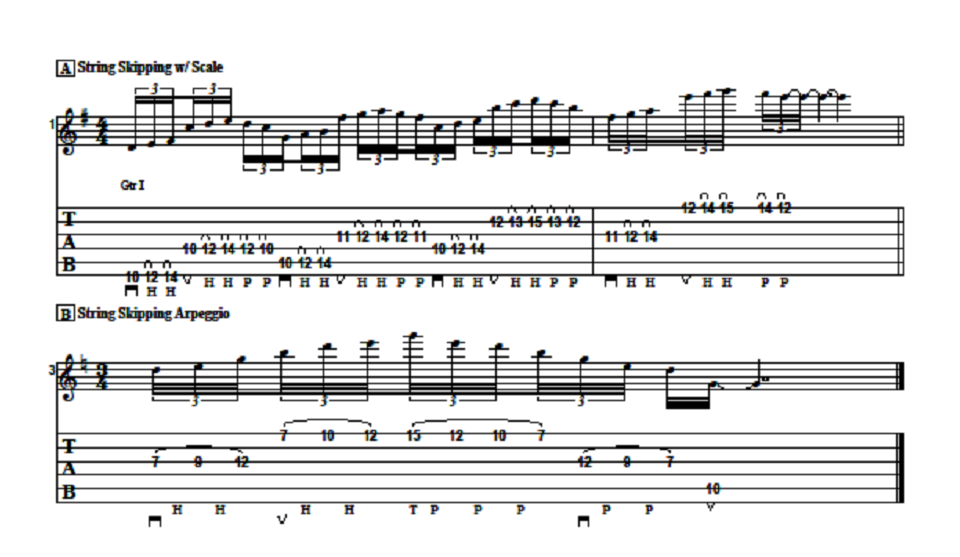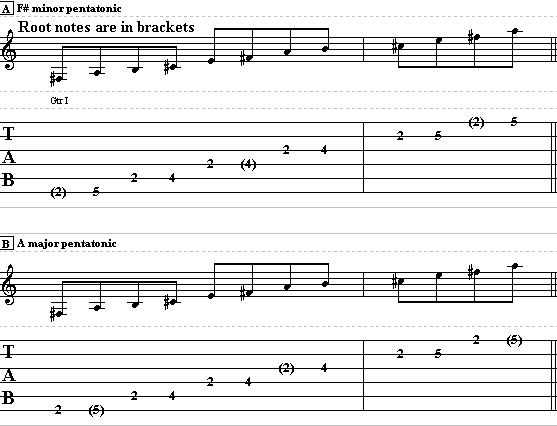All Guitar scales are the same as any other scale. They use the same notes as other scales and the application is the same as with any other instrument. Just the mention of scales is enough to send some guitar players into a state of panic. Many guitarists play by ear and claim to want nothing to do with scales, but the truth is, whether you know what a scale is or not, you use them every time you play.
By simple definition a scale is a pattern of notes arranged in a series of tones and semi-tones (steps and half steps if you prefer) that begin on a specific note (the root note, which is also the name of the scale) and ending on the root’s octave. This arrangement is called a scale pattern.
All guitar scales can be learned just by memorizing the pattern. The example below shows the pattern for the major scale in the key of C. Notice the arrangement of whole and half steps that make up the scale. Starting on C and applying this series of steps brings you to the next C up (one octave higher) and completes the C major scale. If you start this pattern on another note, say the G, and follow the pattern, you will get the notes in a G major scale, including the F# note that belongs in the key of G.
You can construct the natural minor scale the same way, by following the step pattern for the natural minor scale. Another way to find the natural minor is by starting on the sixth note of any major scale and playing the note up to the next octave. The natural minor scale of any major scale contains the same notes as the major scale, but the difference in running order is what gives it the minor characteristic. Compare the difference between the two using the example here.
Guitar Scales

All guitar scales can be learned in this way. There’s no mystery to unravel. Learning a pattern for a scale cuts down on the time it takes to learn scales. There are twelve major keys and twelve minor keys, but instead of learning 24 scales note for note, all you need to do is memorize two patterns and you can build these scales in any key. That’s the secret to learning all guitar scales.
Look at the example of the diminished scale here and you’ll see that the same principle of scale construction applies to even more advanced scales.

All guitar scales can be learned by learning patterns. To make it easier for you, think of the steps or tones as frets on your guitar. One fret equals a half step, two frets equal a whole step. By arranging these patterns on your guitar and playing the scale it applies to, you begin to not only hear the sounds of the scales, but you create a road map that teaches you the neck of your guitar inside out.



